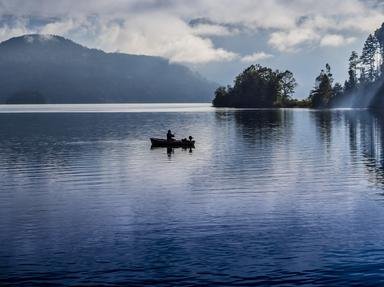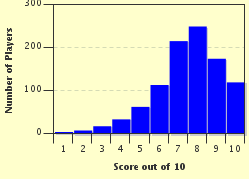Quiz Answer Key and Fun Facts
1. This photo shows a soft-hackle nymph fly that has just been successfully employed to hook a member of one of the types of fish for which flies are most commonly used. What kind of fish is this?
2. This is a picture of a dry fly. What are most dry flies designed to resemble?
3. This is a Grizzly King wet fly. How do wet flies differ from dry flies?
4. Many wet flies are designed to resemble insect larvae that, in the right season, may accidentally land in the water and struggle to escape. This fly is called after what alliterative name for brown and black caterpillars of a number of species?
5. This fly is called a Biot Midge. What is it supposed to resemble?
6. Streamer flies are much larger than most of the other flies discussed in this quiz, and are often used when fly-fishing for gamefish. What kind of animal do they often resemble?
7. Terrestrial flies are made to resemble non-aquatic insects and worms which might be blown onto, or fall into, the water and become fish prey. What is the pictured fly intended to represent?
8. This is a Durham Ranger, a fly usually used when fishing for Salmo Salar. What is the more familiar name for this (usually) ocean-dwelling fish which returns to the fresh water site where it was born to breed?
9. This fly is designed to catch bonefish, a shallow-feeding saltwater sport fish, by imitating one of their favorite foods. Which of the following might be featured at a bonefish dinner party?
10. Poppers are sometimes used instead of more traditional flies and lures when fishing for bass. What sets them apart from other lures and flies?
Source: Author
looney_tunes
This quiz was reviewed by FunTrivia editor
Nightmare before going online.
Any errors found in FunTrivia content are routinely corrected through our feedback system.

